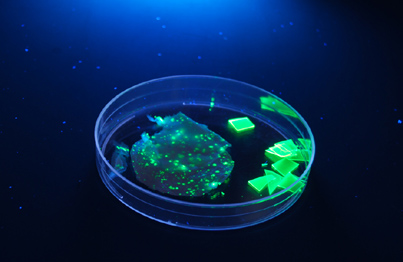The fluorescence from semiconducting inorganic nanoparticles ("quantum dots", QDs) is intense and monochromatic, but the particles tend to be unstable. We showed that commercially available CdSe/ZnS semiconducting nanoparticles can be incorporated into a hydrophilic polymer film with little change in their fluorescence. The QDs remained well-dispersed and stable in a protective cellulose triacetate film, and gentle hydrolysis of the film rendered the film hydrophilic by creating a layer of cellulose on the surface. [CdSe/ZnS quantum dots embedded in cellulose triacetate films with hydrophilic surfaces. Tiffany Abitbol and Derek G. Gray. Chemistry of Materials, 19(17), 4270-4276 (2007).] These novel films may provide a practical method of incorporating intensely fluorescent taggants in paper and other materials made by aqueous processes. A US Patent (US patent 7,820,009, October 26, 2010) has been granted covering this invention. We are also currently preparing electrospun cellulosic fibres with high QD contents, and working on ways to attach QDs to cellulose nanocrystals.

Cellulose triacetate films containing high and low concentrations of CdSe/ZnS semiconducting nanoparticles, illuminated by UV light.